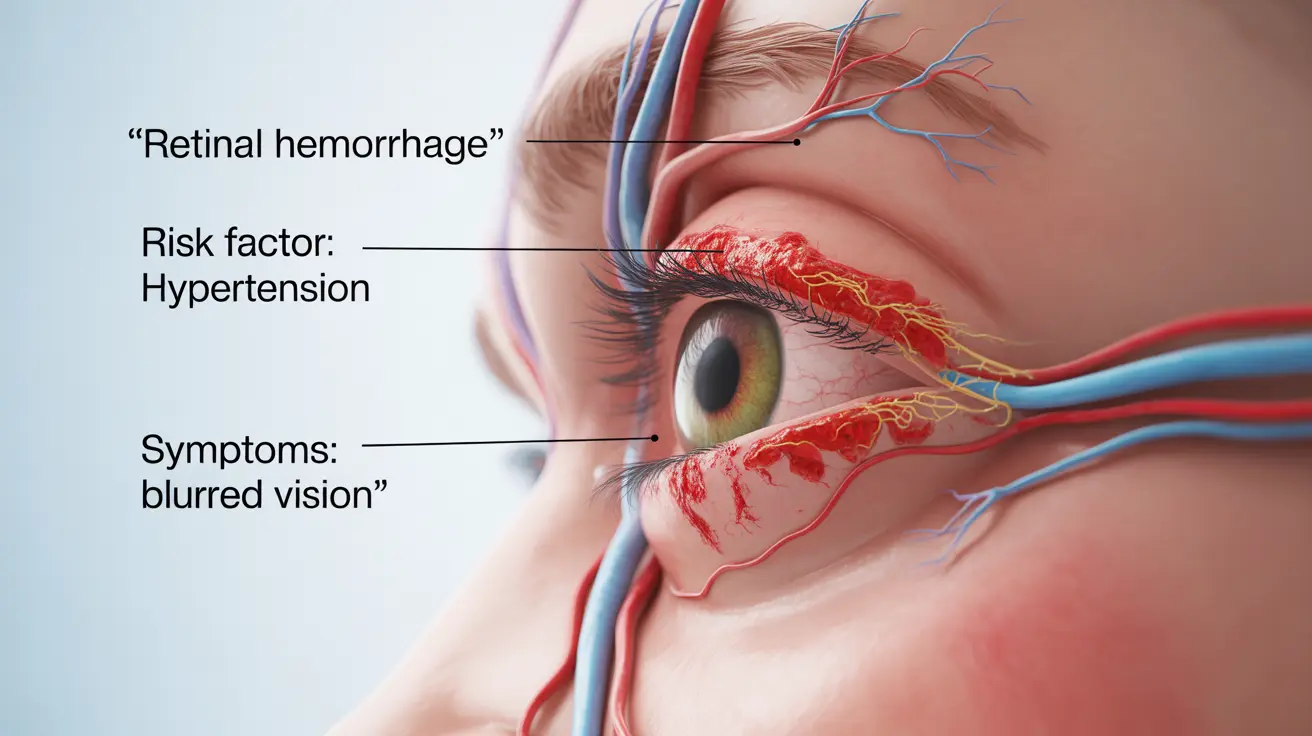Retinal hemorrhage is a serious eye condition that occurs when blood vessels in the retina leak or break, causing bleeding within this crucial light-sensitive tissue. This condition requires immediate medical attention as it can potentially lead to vision loss if left untreated. Understanding the causes, symptoms, and available treatments is essential for anyone concerned about their eye health.
While retinal hemorrhages can be alarming, modern medical interventions often provide effective treatment options when the condition is detected early. This comprehensive guide will explore everything you need to know about retinal hemorrhage, from risk factors to prevention strategies.
Common Causes and Risk Factors
Several underlying conditions and circumstances can lead to retinal hemorrhage:
- Diabetes (diabetic retinopathy)
- High blood pressure (hypertensive retinopathy)
- Blood vessel disorders
- Head trauma or eye injury
- Age-related macular degeneration
- Blood thinning medications
- Severe anemia
Understanding these risk factors is crucial for prevention and determining appropriate treatment approaches. Individuals with chronic conditions like diabetes or hypertension should be particularly vigilant about their eye health.
Recognizing the Symptoms
The symptoms of retinal hemorrhage can vary depending on the location and severity of the bleeding. Common signs include:
- Sudden vision changes or loss
- Floaters or spots in vision
- Blurred or distorted vision
- Dark shadows in peripheral vision
- Reduced visual acuity
These symptoms may develop suddenly or gradually, and their onset can indicate the underlying cause of the hemorrhage. Immediate medical attention is essential when experiencing any of these symptoms.
Diagnostic Procedures
Eye care professionals use several specialized tests to diagnose retinal hemorrhage:
Direct Examination
Your doctor will dilate your pupils and use specialized equipment to examine your retina directly.
Imaging Tests
- Fluorescein angiography
- Optical coherence tomography (OCT)
- Ultrasound of the eye
- Digital retinal photography
Treatment Approaches
Treatment for retinal hemorrhage varies based on the underlying cause and severity of the condition:
Conservative Management
In some cases, small hemorrhages may resolve on their own with careful monitoring and management of underlying conditions.
Medical Interventions
- Laser therapy
- Anti-VEGF injections
- Blood pressure or diabetes management
- Medication adjustments
Surgical Options
More severe cases might require surgical intervention, such as vitrectomy or other specialized procedures to repair damaged blood vessels and prevent further bleeding.
Prevention and Risk Reduction
Taking proactive steps can help reduce the risk of retinal hemorrhage:
- Regular comprehensive eye exams
- Proper management of chronic conditions
- Maintaining healthy blood pressure
- Controlling blood sugar levels
- Wearing protective eyewear during activities
- Following a healthy lifestyle
Frequently Asked Questions
What are the common causes of retinal hemorrhage, and how do they affect treatment options? Retinal hemorrhage can be caused by various conditions including diabetes, hypertension, trauma, and blood disorders. The specific cause directly influences treatment selection, ranging from managing underlying conditions to surgical intervention when necessary.
What are the symptoms of a retinal hemorrhage, and how quickly can they appear? Symptoms can include sudden vision changes, floaters, blurred vision, and dark shadows in vision. These symptoms may appear suddenly in cases of trauma or gradually with chronic conditions like diabetes.
How is retinal hemorrhage typically diagnosed, and what imaging tests are used? Diagnosis involves comprehensive eye examination with dilated pupils, along with specialized imaging tests such as fluorescein angiography, OCT, and retinal photography to assess the extent and location of bleeding.
What are the treatment options for retinal hemorrhage, and when is surgery necessary? Treatment options range from monitoring and managing underlying conditions to laser therapy, anti-VEGF injections, and surgery. Surgery becomes necessary when conservative treatments are insufficient or when there's severe bleeding requiring immediate intervention.
Can regular eye exams help prevent retinal hemorrhage, and what lifestyle changes can reduce the risk? Regular eye exams can help detect early signs of conditions that may lead to retinal hemorrhage. Lifestyle changes such as maintaining healthy blood pressure, controlling diabetes, and protecting eyes from injury can significantly reduce risk.




